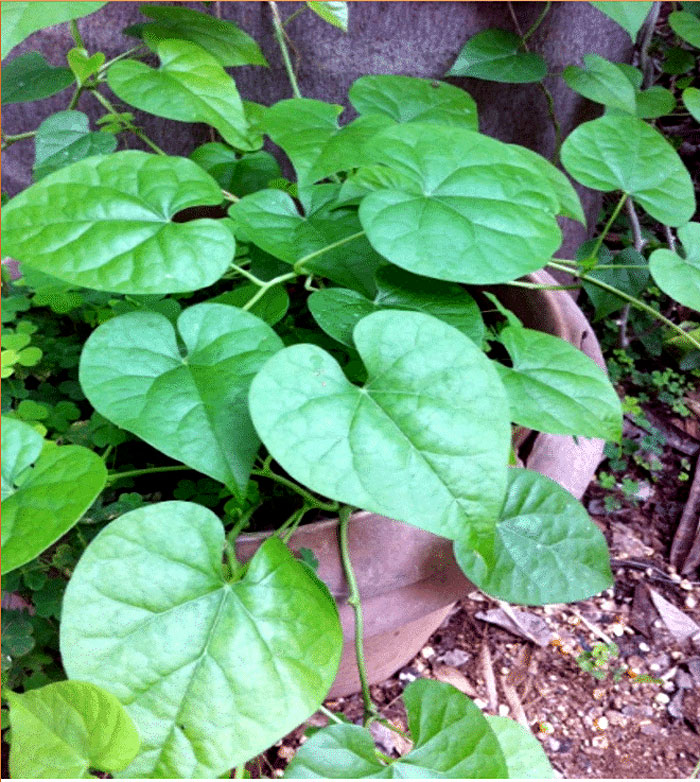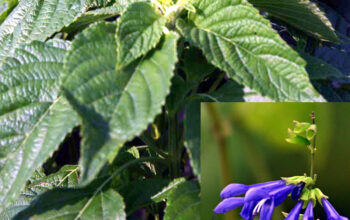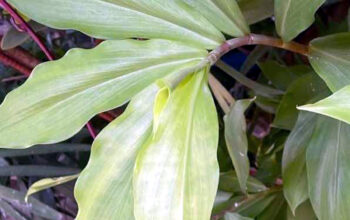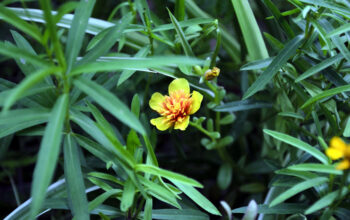Giloy (tinospora cordifolia)
Learn how to grow Giloy herb at home. Giloy benefits of this amazing herb with climatic and soil requirements to make it grow healthier. Tinospora cordifolia is also known as Giloy. It is also known as Amruth, Giloy, Heart-leaved moonseed, Guduchi, and root of immortal. Giloy is native to India and Nepal.
This plant is very easily found in every region in the wild. This plant holds a lot of medicinal properties as stated in Ayurveda, but because of lack of evidence and researches, medical science does not support this statement.
The Tinospora cordifolia, “Giloy” is also known as Amritavalli, Amrta or Cinnodbhava which means nectar of life.
The main alkaloids and secondary metabolites in giloy are tinosporine, tinosporide, tinosporaside, cordifolide, cordifol, heptacosanol and tinosporidine. Theses alkaloids and metabolites and very effective in removing body toxins and improving the immune system.
Popular names
Heart-leaved moonseed, Guduchi, Amruth, tinospora cordifolia and Giloy.
Giloy overview
Scientific name Tinospora cordifolia
Common name Guduchi, Moonseed, Giloy
Plant type Medicinal plant
Sun requirement Bright full sun
Soil conditions Sandy dry soil
Soil pH 5.5-7
Zone 10-12
How to grow Giloy
Propagation and plantation
Giloy plant is planted through seeds. Majorly people plant guduchi through its stem or buy from nurseries. It shows better results when planted through stem cutting method. However, it can also be planted through the broadcast method. Giloy plant is grown in the areas with bright sun and medium rainfall. This plant is drought tolerant and can die in more water if not kept in direct sun. Waterlogging with this plant will rot the stem.
Broadcast method
The bed for growing Guduchi seeds should be raised from ground level for proper drainage of water. It should be prepared by mixing garden compost and sand equally to make the soil slightly sandy and loam. Soak the seeds in water for 24 hrs before sowing, in cold water for fast germination.
Seeds should be sown during May – July in small poly bags. They will start to germinate in 8 – 10 days. In nearly after 4 – 6 weeks’ baby plants will be ready to transplant in the main field.
Stem cutting method
Moonseed plants are also cultivated by stem cuttings from old stems of the mother plant. Stems of the mother plants that have a node can be planted directly to the ground. Take 3 in long stem with node and cut the top of the stem slightly diagonal and place directly to the land.
Plantation Guduchi
Once you start transplanting the seedlings or the stem, make sure the optimum spacing between the plants should be 3 x 3m to ensure healthy growth and higher yield.
In 1-hectare, plant density should be around 2500 stems, which is considered as optimum density. 5-kilogram seeds would be required for covering 1- hectare of the land.
Since Guduchi is a climber, it requires some support preferably Neem and Mango trees. It is said Giloy planted with neem and Mango possess higher medicinal properties.
Soil and location requirement
Moonseed grows well in almost all kinds of soil, but slightly sandy loam soil with good drainage is considered the best. Giloy grows in hot and dry climates with medium rainfall. Sandy soil is highly porous and the air gets in easily. Sandy soil or light soil is known best for its ability to drain water. Giloy cannot retain in soil that holds water. It is sensitive to waterlogging.
Water requirements
Moonseed is a rain-fed herb. Excessive watering and waterlogging can kill this plant. Water the seedlings at the time of plantation this will help it to settle and tighten their roots.
Giloy caring tips
Fertilizers and manures
Plough the land properly and make it porous and weed-free. In 1 hectare of land farmyard manure of 10 tonnes and a basal dose of 75 kg nitrogen can be used.
Pest and diseases
Tinospora cordifolia is a pest-free herb as of now. No pests and diseases have been recorded in giloy to date.
Harvest Guduchi
When stems become mature and obtain the width equal to your finger or thumb, then comes the time to harvest those stems. Thin stems should not be harvested until they become as thick as your finger or thumb.
Uses and Giloy benefits
- Health benefits of eating Moonseed are as follows:
- Boosts immunity
- Detoxifies blood
- Aids digestion
- Fights all skin diseases
- Cures asthma and bronchitis
- Keep a check on Blood pressure and cholesterol
- Reduction in arthritis pain
- Increases blood platelets
For detailed information on giloy benefits. see.
For pin
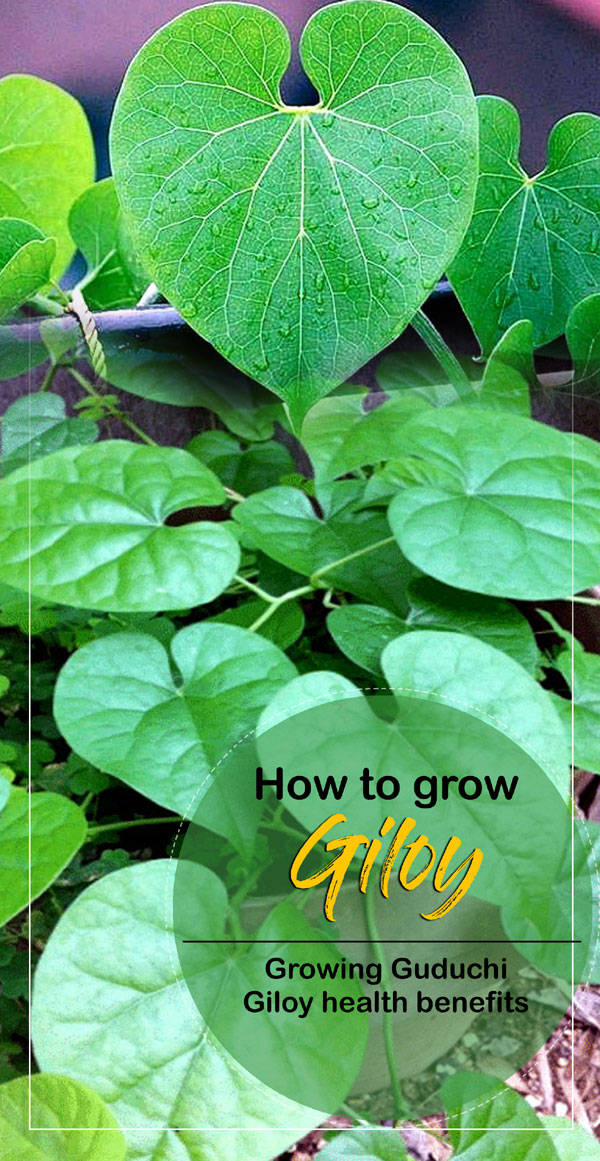
Read also
How to grow ashwagandha. Growing Rambutan fruit. 6 healing herbs you must grow in your garden. How to grow Lotus plants. Growing cucumber in your garden. Health benefits of Papaya. Cumin herb growing and care tips. Betel leaf growing guide. Chrysanthemums growing and care tips. 10 Best vegetables to grow in pots. Zinnia flowers growing guide. Petunias growing and care tips.
For pin:

